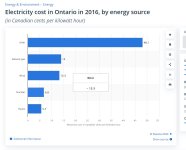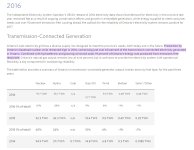Wind power costs a lot more than natural gas. The raw generating costs are about the same, somewhere between 12 and 15c/kwh, the big difference is wind turbines work best when there is little demand (spring and fall and overnight). As a result, copious amounts of wind power are dumped. With gas, you just shut the burners down and don't generate unnecessary energy. Ever see a wind turbine not spinning on a windy day? That happens because OntarioHydro can curtail wind generators by 10% by paying them a curtailing fee (a fee to stop generating) when there is too much power.
On a windy day in the spring, wind will generate 85,000MWh for Ontario, however those are periods of low demand, the grid only wants of 4MWh. Ontario Hydro will curtail 8.5MWh of wind generation (meaning they pay generators to idle their generators), then accept and pay for the remaining 76.5MWhs at contract rates. They will use 4MWh, the rest will be dumped. The net cost for the 76.5 MWh is about 0.16/MWh. The average selling price is .07MHh for the 4MWhs needed, and .002/MWH for the dumped electricity. After the math is done, the loss on generating wind in Ontario for each blustery spring & fall day is around $12million.
Wind is certainly greener, and as the cost and carbon tax mount on natural gas, it will eventually become cheaper.
But not today.

















